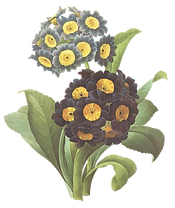On Honey and Mead
- laurengoff
- Jun 28, 2016
- 3 min read
Did you know that every spoonful of raw honey took one million pollen trips for the bees to make? This is probably not so for store-bought honey, since companies are allowed to make the honey they sell 30% molasses and not put it on the label.

Those bees worked hard to make that honey! Better use it!
Bees make honey in order to have food for the winter when there is little to no nectar for them to eat. European honeybees produce much more honey than they use, so beekeepers tend to harvest from them. If nectar and pollen is plentiful, their forage range is within three miles of the hive.
Many people believe eating the raw honey that the bees made from pollen in the area helps alleviate allergies. I am not sure whether that is true or not, but it certainly has a richer flavor. The way bees select flowers to make honey was also found to limit the amount of metal contamination from plants in polluted soil.

If you were allergic to these flowers, you might want to eat the honey from this region.
What's something you can make with this marvelous product, made by so many hardworking bees? Surely you want to do it justice, right? Well, one thing you could make is mead -- alcohol made with honey!
Mead is thankfully very easy to make, and with certain recipes you'll be taking a little trip to the past. The kind of yeast available to the ancients was simple bread yeast, and as it happens, the easiest recipe uses inexpensive bread yeast.
~*~*~*~*~*~*~*~*~*~*~*~*~*~*~*~*~*~*~*~*~*~*~*~*~*~*~*~*~*~*~*~*~*~*~*~
3 1/2 lbs Clover or your choice honey or blend (will finish sweet) 1 Large orange (later cut in eights or smaller rind and all) 1 small handful of raisins (25 if you count but more or less O.K.) 1 stick of cinnamon 1 whole clove ( or 2 if you like - these are potent critters) optional (a pinch of nutmeg and allspice )( very small ) 1 teaspoon of Fleishmann’s bread yeast Balance water to one gallon

Process: Use a clean 1 gallon carboy Dissolve honey in some warm water and put in carboy


Wash orange well to remove any pesticides and slice in eights --add orange (you can push the slices through the opening, rinds and all)

Put in raisins, clove, cinnamon stick, any optional ingredients and fill to 3 inches from the top with cold water. (You need room for some foam -- you can top off with more water after the first few days.)
Shake the heck out of the jug with top on, of course. This is your sophisticated aeration process. When at room temperature in your kitchen, put in 1 teaspoon of bread yeast. (No you don't have to re-hydrate it first-- the ancients didn't even have that word in their vocabulary-- just put it in and give it a gentle swirl or not. The yeast can fight for their own territory)

Install water airlock. Put in dark place. It will start working immediately or in an hour. (Don't use old yeast) After major foaming stops in a few days add some water and then keep your hands off of it. (Don't shake it! Let the yeast alone, except it's O.K. to open your cabinet to smell every once in a while.)

Racking --- Don't you dare Additional feeding --- NO NO More stirring or shaking -- Don't touch After 2 months and maybe a few days it will slow down to a stop and clear all by itself. Then you can put a hose in with a small cloth filter on the end into the clear part and siphon off the golden nectar. If you wait long enough, even the oranges will sink to the bottom. If it is clear it is ready, however, so you don't have to wait for that. You don't need a cold basement. It does better in a kitchen in the dark (like in a cabinet), and likes a little heat (70-80 degrees Fahrenheit)."
~*~*~*~*~*~*~*~*~*~*~*~*~*~*~*~*~*~*~*~*~*~*~*~*~*~*~*~*~*~*~*~*~*~*~*~
I have tried this recipe myself, as my family brews mead for fun. It is good, and a great way to appreciate raw honey!











Comments